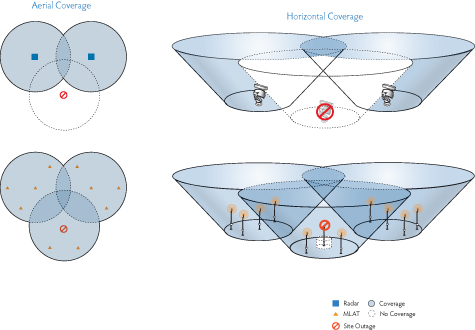| When looking at traditional radar, it is easy to see that the maintenance of a multilateration system is easier and less costly.For one, a multilateration system has no moving parts. Secondly, each sensor is small and easy to reach. What may seem less obvious is the dramatic improvement possible in terms of operational availability due to the network architecture of an MLAT surveillance system. Multilateration provides levels of redundancy that are a direct result of its network design. Typically referred to as N-1 redundancy, the basic concept is that if any single ground station were to experience an outage, the coverage would not degrade as remaining ground stations continue to provide the required coverage. Regardless of whether the outage is a planned maintenance task, scheduled power outage, or an unplanned event localized to a site, the multilateration system is able to provide continuous operational availability and coverage. With traditional radar, a power outage or site maintenance would result in a loss of surveillance coverage. With multilateration, sophisticated system design models “build-in” various levels of redundancy to achieve operational availability and safety requirements. These models can simulate the outage of one or more ground stations and the resulting surveillance coverage for each scenario and event combinations. Multilateration’s network architecture, inherent “N-1” redundancy and system design tools not only allow ANSPs to schedule maintenance without any coverage degradation, but also dramatically improve availability when things don’t go according to plan. | | 
A site outage, whether planned (e.g. maintenance) or unplanned (e.g. power outage), demonstrates the superior operational availability of multilateration compared to SSR.
|

